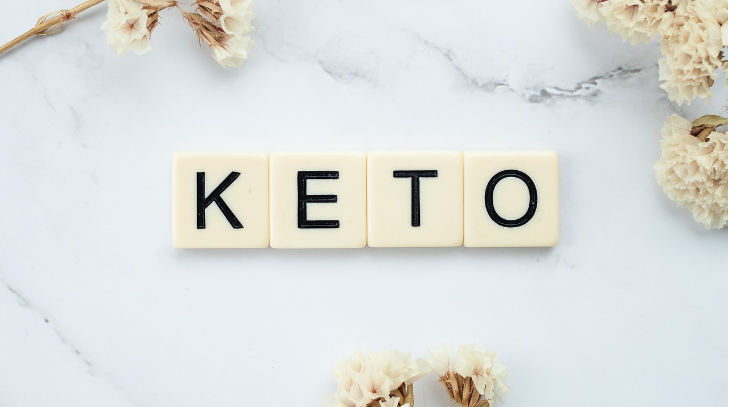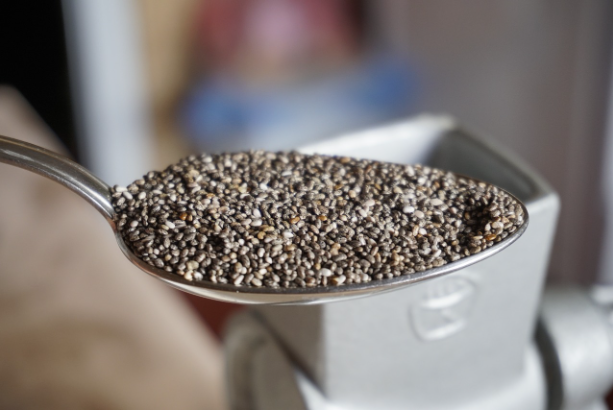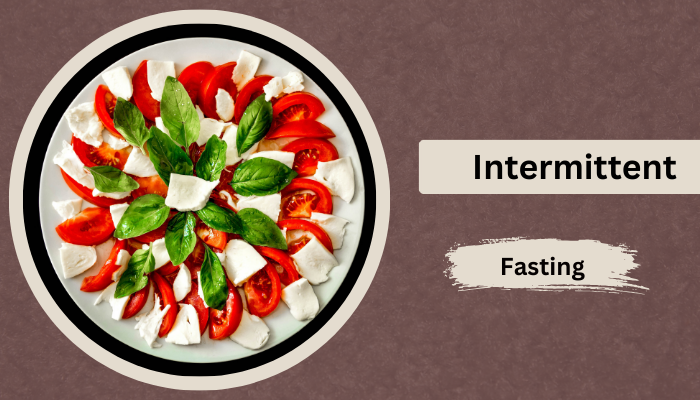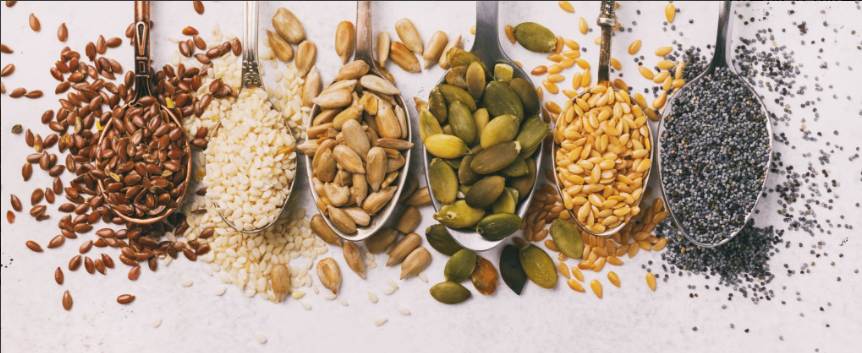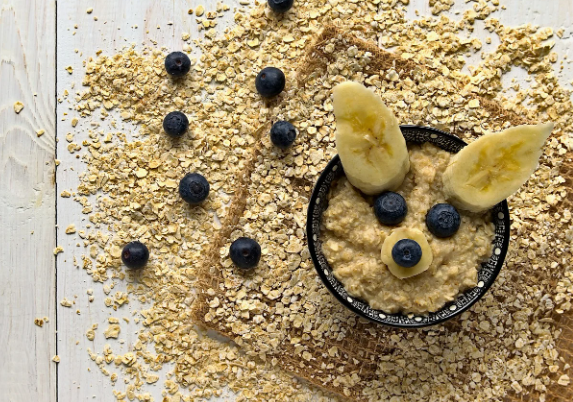What is the Keto Diet? The ketogenic diet, is a high-fat, low-carbohydrate dietary approach that has gained significant popularity in recent years. It aims to put the body into a metabolic state called ketosis, where the body begins to burn fat for fuel instead of carbohydrates. In a traditional diet, the body primarily uses glucose, derived from carbohydrates, as its main source of energy. This diet, on the other hand, drastically reduces carbohydrate intake, typically to less than 50 grams per day, forcing the body to transition to an alternative fuel source – ketones. Ketones are produced when the body breaks down fat for energy, and they can be used by the brain and other organs as a source of fuel. This metabolic shift can have various health benefits, including weight loss, improved insulin sensitivity, and reduced inflammation. Benefits of the Keto Diet 1. Weight Loss: The diet is known for its ability to promote weight loss. By restricting carbohydrates and increasing fat intake, the body enters a state of ketosis, which can lead to a higher rate of fat burning and reduced appetite. 2. Improved Insulin Sensitivity: This diet has been shown to improve insulin sensitivity, which is crucial for managing blood sugar levels and reducing the risk of type 2 diabetes. 3.Reduced Inflammation: The high-fat, low-carb nature of the diet can help decrease inflammation in the body, which is linked to various health conditions, such as heart disease, cancer, and Alzheimer’s disease. 4.Improved Brain Function: Ketones can provide an alternative fuel source for the brain, which may lead to improved cognitive function, focus, and mental clarity. 5. Epilepsy Management: This diet has been used successfully to manage epilepsy, particularly in children, by reducing the frequency and severity of seizures. What to Do on the Keto Diet Focus on High-Fat Foods: This diet emphasizes consuming high-fat foods, such as avocados, nuts, seeds, olive oil, and fatty cuts of meat. Limit Carbohydrate Intake: To achieve and maintain ketosis, it’s essential to limit carbohydrate intake to less than 50 grams per day. This means focusing on low-carb vegetables, berries, and other non-starchy foods. Increase Protein Intake: While the diet is high in fat, it’s also important to consume an adequate amount of protein to support muscle mass and overall health. Stay Hydrated: Drinking plenty of water is crucial while following this diet, as the body may lose more fluid and electrolytes during the initial stages of the diet. Monitor Ketone Levels: To ensure that you’re in a state of ketosis, you can use urine, blood, or breath tests to monitor your ketone levels. What to Avoid on the Keto Diet High-Carb Foods: Steer clear of high-carb foods, such as bread, pasta, rice, potatoes, and sugary treats, as these can disrupt ketosis. Processed Foods: Avoid processed and packaged foods, as they often contain hidden carbohydrates and preservatives that can hinder your progress on the diet. Alcohol: Alcohol can be high in carbohydrates and may slow down the process of achieving and maintaining ketosis. Legumes: While some legumes, such as chickpeas and lentils, can be included in moderation, they are generally higher in carbohydrates and should be limited. Certain Vegetables: Some vegetables, such as carrots, beets, and corn, are higher in carbohydrates and should be consumed in moderation while following this diet. Conclusion This diet is a powerful dietary approach that can provide a range of health benefits, from weight loss to improved brain function. By understanding the principles and following the recommended guidelines, individuals can potentially experience transformation results. However, it’s important to remember that it may not be suitable for everyone, and it’s always best to consult with a healthcare professional before starting any new dietary regime. With the right approach and commitment, it can be a highly effective tool in achieving one’s health and wellness goals.Remember, this diet is a highly individualized approach, and it’s important to consult with a healthcare professional before starting any new diet or making significant changes to your eating habits. Written By:- Amisha
Author: Vedsure2024
Chia seed : 9 powerful health benefits
CHIA SEED Chia seeds are a superfood rich in nutrients and full of health-promoting ingredients. They are a great source of essential minerals, plant-based protein, omega-3 fatty acids, and dietary fibre. Owing to its remarkable nutritional composition and adaptability in the kitchen, chia seeds have gained popularity as a healthy food option. Benefit of chia seed An outline of chia seeds’ possible health advantages is provided below: 1. Nutritional Profile Nutrient-dense chia seeds are high in fibre, protein, antioxidants, omega-3 fatty acids, and a host of other vitamins and minerals. They are very rich in fibre; one ounce (28 gms) has around 11 gms of fibre, or more than one-third of the daily recommended amount. 2. Omega 3 fatty acid One of the greatest plant-based sources of the necessary fatty acid omega-3 alpha-linolenic acid (ALA) is chia seeds. ALA is critical for brain function, heart health, and inflammation reduction. 3. Blood sugar control The fibre and protein included in them may aid to regulate blood sugar levels by slowing down the absorption of carbohydrates. Some study suggests that they may help improve insulin sensitivity and reduce the risk of type 2 diabetes. 4. Heart Health They include omega-3 fatty acids, fibre, and antioxidants that may help reduce blood pressure, inflammation, and cholesterol—all of which are heart disease risk factors. 5. Weight management It has a high fibre and protein content that may help with weight reduction or maintenance by promoting feelings of fullness and satisfaction. According to certain studies, it may also aid in the reduction of belly fat. 6. Digestive health It contain soluble fibre, which can aid in controlling bowel motions and enhancing digestive health in general. Additionally, the fibre could nourish the good bacteria in your stomach, which is crucial for gut health. 7. Bone health It are a good source of nutrients, such as calcium and magnesium, which are necessary for strong and healthy bones. How to use chia seed on daily basis Here are some different ways to use chia seeds: 1. Sprinkle them on top of salads, yogurt, oatmeal, cereal, or smoothies for a nutritional boost. Chia seeds are high in fiber, protein, omega-3s, and other nutrients. 2. Make a chia seed pudding by soaking the seeds in plant-based milk, fruit juice, or water along with your choice of sweetener, fruits, nuts, etc. 3. Add to baked goods like muffins, breads, cookies, and granola bars. They add texture and nutrition. 4. Use it to make a healthy, vegan egg substitute. Mix 1 tablespoon with 3 tablespoons of water and let it sit for a few minutes until it forms a gel-like consistency. 5. Make jam by cooking down fruit with chia seeds. The seeds will thicken the jam without the need for sugar or pectin. 6. Sprinkle on top of avocado toast or hummus for a crunchy topping. 7. Mix into batters for pancakes, waffles, or crepes to add fiber and nutrients. 8. Add to homemade energy bars, balls, or bites for an extra nutritional punch. 9. Use to thicken smoothies, soups, or sauces. Just a tablespoon or two can make a difference. 10. Incorporate into homemade granola or trail mixes. The versatility of chia seeds makes them a great addition to both sweet and savory dishes. Start with small amounts and experiment to find your favorite ways to use them. Conclusion To sum up, they are beneficial to general health. Furthermore, offer significant amounts of essential minerals including calcium, magnesium, and phosphorus in addition to high-quality plant-based protein. Antioxidants found in the seeds may also aid in lowering inflammation and defending against oxidative stress. It’s not surprising that chia seeds have gained popularity as a health food option for individuals trying to increase their nutrient intake and promote general well-being, given its remarkable nutritional profile and adaptability in baking and cooking. Written By:- Amisha
Intermittent fasting around the clock: 4 different type
Intermittent fasting Following a schedule that falls between your time of eating and your time of fasting is known as intermittent fasting. You may see several different kinds of intermittent fasting. So here are some of the of the most liked ones. 16/8 method: 16/8 is the most common method of intermittent fasting, followed by a lot of people eating for eight hours and fasting for 16 hours. But in the eight-hour window, you can only eat under the given calories. 5:2 method: In order to follow this diet, you must eat for five days of the week and fast for two consecutive days. In those two days, you can have 500 to 600 calories. 5:2 might be a lot harder to fall, but it is more successful in helping to lose weight. Eat-Stop-Eat Once or twice a week, this strategy entails a total 24-hour fast from eating. You may decide, for instance, to fast from supper the previous evening until dinner the next evening. The Warrior Diet: In order to follow this diet your restrict your eating for a period of 20 hours and eat like a warrior at dinner time. Benefits of Intermittent fasting Intermittent fasting can be done in different ways. Some people decide to fast for 12 to 14 hours, and some for 16 to 8 hours. Some people choose to alternate lengthy intervals of eating and fasting or go for a day or two in a week. Choose the window that suits your daily schedule. It is evident that there is a suggestion that intermittent fasting is more effective than calorie restriction. It is proven to be more successful for weight reduction. Because of fasting, the hormones that rule the metabolism and appetite become more balanced. Research has indicated that there might be some health advantages to intermittent fasting, such as: Weight loss Losing weight intermittently can be accomplished with success. Limiting your eating window makes you automatically eat less calories. Fasting has also been linked in certain studies to increased metabolism. Improved blood sugar control: Low blood sugar and high insulin sensitivity are two common benefits of intermittent fasting Reduced inflammation: Another serious risk factor in many people is chronic inflammation, on a whole another level body while fasting body tends to experience less inflammation. Improved brain health: In some studies it has been found that intermittent fasting has been linked to certain brain enhancing function and protection against neuro-degenerative illnesses including Parkinson’s and Alzheimer’s. Before beginning any new diet, it is important to see your doctor, especially if you have any underlying medical concerns. Some other rules to follow: Drink an ample amount of water; hydration is the key during fasting. Black coffee, water, green tea, etc. During the first few days you might see some negative effects like hunger, exhaustion or irritation. These symptoms might disappear eventually. There is no secret way for losing weight or becoming healthier than intermittent fasting. It is crucial to take it in addition to a balanced diet and frequent exercise. Conclusion In conclusion, it is an easy diet plan that can offer different medical advantages, including weight reduction. Other than that, it can develop glucose control, decreased irritation, and possibly improved cerebrum capability. While there are a few famous irregular fasting techniques, the one that works best for an individual depends on their own tendency and health status. It is required to talk with a medical care professional prior to beginning any new dietary routine, particularly in the event that you have any prior medical conditions. Intermittent fasting is followed with a decent eating routine and standard activities to accomplish ideal health results. With the right methodology, fasting can be a significant device in one’s general health venture. Written By:- Amisha
4 Type of Vegetarian & Is Vegetarianism the New Normal?
Becoming Vegetarian: A Dietary Shift A vegetarian diet entails cutting out all meat, including poultry, and occasionally fish from your diet. Plant-based foods such as fruits, vegetables, grains, legumes, nuts, and seeds are the main emphasis. Vegetarianism comes in several forms; some definitions are as follows: 1.Lacto-ovo vegetarian: The most followed type of vegetarianism permits the use of eggs and dairy products (milk, cheese, yogurt) in your diet. 2.Lacto-vegetarian: There are several reasons why people who follow a lacto-vegetarian diet decide not to eat eggs. Some people might not eat eggs because of dietary restrictions or allergies. Others might just like a diet that only consists of items originating from plants. 3.Ovo-vegetarian: Some choose to consume eggs but stay away from dairy. They believe the dairy sector raises some questions. Like isolating the calves from their mothers, giving injections to cows so they produce more milk, and even de-horning. 4.Vegans Following all plat bases diet even the dairy products are removed from the diet. They believe it is ethical and more environment friendly Why choose to become a vegetarian? Health According to some studies this type plant based diet can reduce the risk of hear diseases, diabetes, and some other health issues. Additional benefit it lowers the cholesterol levels and blood pressure. Ethics Some individuals disagree with the industrial farming methods used to produce meat. They can be worried about the treatment of confined animals or the usage of hormones and antibiotics in farm animal Environment. Cutting down on forest deforestation, water pollution, and emissions of greenhouse gases are all impacted by animal husbandry. Following plant based diet is one step towards reducing the impact on the environment. Livestock farming can also cause deforestation. The clearing up of the rain forest in order to cultivate more crops for animal feed. A lot of water is also needed in animal husbandry to cultivate crops that feed the animals as well as for their drinking needs. Religion or Culture: Plant-based diets are customarily encouraged by some faiths or civilizations. Hinduism, for instance, encourages vegetarianism as a means of honoring all living creatures. How to transition: You may slowly shift towards adjusting to a vegetarian diet at a rate that works for you. The following actions can help you gradually adopt a vegetarian lifestyle: Start small: You should start by planning one or two plant based dinners each week. This might be any chosen time for lunch, supper, or brunch for vegetarians. In order to increase the number of vegetarian meals you consume each week as you become more accustomed to them,. Explore vegetarian recipes There’s a whole world of delectable plant based food to explore recipes abound in library cook books, online, and apps; they’re simple to follow and ideal for first-timers. Try a variety of flavors and ingredients to create meals that you love. Find substitutes: There are many plant-based substitutes for meat in popular recipes. You may make vegetable burgers instead of beef burgers on the grill, replace your typical hamburger soup with lentil soup, and have scrambled eggs instead of scrambled eggs with tofu scrambles. Focus on variety: Eat a variety of plant-based meals to make sure you’re receiving enough protein, iron, calcium, and other important nutrients. Make sure your diet is rich in whole grains, legumes, nuts, seeds, fruits, and vegetables. Never be scared to attempt new things! There are many of tasty and healthful plant-based dishes to try. Conclusion A unique dietary approach focused on plant-based foods. Depending on the motivation health, morality, or environmental impact. It may be a fulfilling way of life. You can design a tasty, nourishing, and ethically-compliant diet with thoughtful preparation and an open-minded attitude. Written By:- Amisha
Seed Cycling: how it is beneficial for your hormones
What is seed cycling? Basically seed seed cycling is a practice when you eat specific seeds during two phases of your menstrual cycle. To begin with the follicular and luteal phases to promote a healthy balance of estrogen and progesterone levels. It’s a gentle and a natural way of reducing PMS symptoms, improve fertility and help simulate menstruation. It is also helpful with other symptoms such as hormonal imbalance. Beyond menstrual cycle post menopausal, seed cycling can be use at different stages of a women’s life. Understanding seed cycle better. There are two phases follicular phase begins the first day of your menstrual bleeding until the ovulation. Which typically last around 14 days. The second phase starts at ovulation until your next menstruation There is a rise in estrogen level during the first half of the cycle, and during the second half of the cycle progesterone level rise while estrogen level slowly decline. An imbalance between estrogen and progesterone can contribute to PMS symptoms, menstrual cramps, acne, short luteal phases and regular cycle. Seed cycling for fertility Moreover, seed cycling is based on the idea of influencing hormone levels through specific seeds, which may be beneficial for fertility. Flax seed in the first half of the cycle (follicular phase) may help regulate estrogen, promoting healthy follicle development for egg maturation. Pumpkin seeds in the second half (luteal phase) might support progesterone production. Which prepares the uterine lining for implantation. Balanced hormones are essential for various aspects of reproduction. Additionally, seeds like flax seed and sesame seeds contain anti-inflammatory properties, which might be helpful for fertility as inflammation can impact implantation. It’s important to note that while these potential benefits sound promising. More research is needed to confirm the effectiveness of seed cycling for improving fertility cycle. Seed cycling for PCOS Here the theory is that eating particular seeds at particular times. Throughout your menstrual cycle might affect your hormone levels. In the luteal phase of the cycle, which is the second half, pumpkin seeds may promote the synthesis of progesterone. While flax seed may aid in the regulation of estrogen in the follicular phase. Maintaining hormone balance is essential for controlling PCOS symptoms. How to incorporate Seed cycling is a straightforward practice to implement into one’s daily routine. The general guideline is to consume 1-2 tablespoons of the recommended seeds per day, either raw or ground up. These seeds can be easily incorporated into your normal diet in various ways – sprinkled on meals, mixed into yogurt or smoothies, or added to salad bowls. The specific seeds to eat depend on which phase of the menstrual cycle you are in, with flax and/or sesame seeds for the follicular phase, and pumpkin and/or sunflower seeds for the luteal phase. The flexibility in preparation and incorporation makes seed cycling a convenient and accessible practice to support hormonal balance throughout the monthly cycle. Nutrients you get from seed cycling Flax seeds : Rich in omega-3 fatty acids, fiber, and lignans (plant compounds with potential health benefits). Pumpkin seeds : A good source of zinc and magnesium. Sesame seeds: A good source of calcium, magnesium and healthy fats Sunflower seeds: A good source of vitamin E, selenium Conclusion In conclusion, seed cycling is a natural approach that involves consuming specific seeds during the different phases of the menstrual cycle to help promote hormonal balance. The theory behind it is that the nutrients in these seeds can support the rise and fall of estrogen and progesterone levels throughout the cycle. Seed cycling may offer potential benefits for managing PMS symptoms, regulating the menstrual cycle, and even improving fertility and PCOS symptoms. However, more research is still needed to conclusively confirm the effectiveness of this practice. Nonetheless, incorporating seed cycling can be a gentle and holistic way for women to support their reproductive health, as the seeds provide a variety of beneficial nutrients. As with any new health practice, it’s important to consult with a healthcare provider, especially for those with underlying medical conditions, to ensure it is suitable and safe for your individual needs.
4 Types of Oats for weight loss: fuel supplier and its nutritional benefits
Oats for Weight Loss All types of oats are high in fiber, which is essential for gut health. You’re less inclined to overeat since fiber makes you feel fuller for a longer period of time, making oats for weight loss an essential part of the diet. To begin with we should look at the many varieties of oats and their health advantages is provided below: Types of Oats for weight loss Quick oats Significantly quicker oats are thinner than the old-fashioned oats, which helps to cook them faster. They have a comparable surface and flavor to rolled oats. One cup (cooked) of fast oats contains around 3 gms of fiber. They have a somewhat higher glycemic index than steel-cut oats or moved oats. Steel-cut oats The least-dealt-with kind of oat is steel-cut. The surface and sort of steel-cut oats are chewy and nutty. Out of all the oat combinations, they have the best fiber content; a cooked cup has around 5 gms of fiber. Besides considering the fact that steel-cut oats have a low glycemic record and won’t raise your glucose. Rolled oats (old-fashioned oats): Rolled oats are steamed and straightened, which makes them cook quicker than steel-cut oats. They have a gentler surface than steel-cut oats and a milder flavor. One cup (cooked) of moved oats contains around 4 grams of fiber. They likewise have a low glycemic record. Instant oats They are the most handled kind of oat. They are pre-cooked and rolled extremely slender, which permits them to cook quickly in steaming hot water. Instant oats frequently have added sugar and enhancing. One cup (cooked) of moment oats commonly contains around 1-2 grams of fiber, and the additional sugar can raise the glycemic file. Nutritional Value of oats Packed with nutrients, blend of fiber, minerals, and anti-oxidants that make them a significant choice on your fitness journey. Let’s understand their benefits in details: Fiber There are two kinds of fiber tracked down in oats: soluable and insoluble. They are a strongly suggested source of fiber. Soluable fiber like beta-glucan structure a gel in your stomach-related framework that shapes a sensation of completion and manages glucose levels. Insoluble fiber keeps things moving flawlessly through your stomach. Protein: Unlike other grains, you can find high quantity of protein content in oats. You’ll find 100 gm serving of oats provide you 17-18% in depending on which kind of oats you are using. Glycemic index: Oats have low glycemic index, they don’t cause a high spike up your blood sugar level. Making it a beneficial for people managing their diabetes. Micronutrient: Good source of vitamins and minerals are found in oats. They are very high in manganese, which is important for metabolism, bone health, and enzyme activity. They also include good amounts of iron, copper, phosphorus, magnesium, and B vitamin all of these are essential for different body processes. Oats for weight loss Oats for weight loss affect weight due to a number of variables, making them a useful tool for weight loss. The high fiber content found in oats is particularly in the soluble variety. This super fiber has the amazing capacity to absorb water from your digestive tract and produces a gel that functions in two important ways. This gel prolongs feelings of fullness by slowing down the entire digestive process.This results in less of a desire to snack and generally fewer desires over the day, which eventually aids with calorie consumption reduction. Conversely, beta-glucan is an important factor in blood sugar regulation. Enjoying a bowl of muesli helps the beta-glucan capability by dialling back glucose take-up into the circulation. This prevents the glucose from rising and falling excessively fast, which can exhaust your energy and prompt you to revel in unfortunate snacks to compensate for the drops. Second, oats low glycemic index (GI) makes them stand out. GI system has ranked carbs accordingly to how they affect blood sugar levels. High-GI foods make blood sugar shoot up quickly, like a sugar rocket taking off, then plummet quickly, leaving you feeling exhausted and maybe looking for sugary snacks for a little pick-me-up. Low GI of oats helps them release that sugar into your circulation gradually. Consistent energy levels help you stay focused and avoid blood sugar drops, which can lead to hunger sensations and undermine your weight reduction efforts. Conclusion Oats for weight reduction are a fantastic decision for anybody hoping to work on their general well being and arrive at their weight reduction goals. With their great supplement profile and remarkable properties, oats can be a significant device in your weight reduction weapons store. Integrating oats into your eating regimen is a straightforward yet strong method for supporting your weight reduction venture and accomplishing your objectives. Written By:- Amisha
Low calorie food: successfully following the lifestyle
Low calorie food Many individuals resort to low calorie food in an effort to get thinner. The day-to-day calorie admission is restricted to 1200–1500 for ladies and 1500–1800 for guys. Thus, there is a calorie shortage because your body removes a larger number of calories than it consumes. Natural food varieties like organic products, vegetables, and lean protein sources are needed in low-calorie foods. These control your calorie consumption while maintaining a sense of completion and fulfilment. Finding a well-rounded strategy that emphasizes nutrient-dense. Whole meals and includes techniques like strength training to reduce. Muscle loss and increase metabolism is important. Recall that losing weight is a journey, and for long-term success, a sustained, moderate-calorie diet together with regular exercise is frequently advised. Low calorie food: science behind it Calorie Deficit: a calorie shortfall is the point at which your body ousts a bigger number of calories than it consumes. Your body involves the put away fat as fuel because of this deficiency, which causes weight reduction. Metabolic Rate: Your body uses your metabolic rate, which is like its engine’s output, to continuously burn calories to power all of your activities. This may be measured in two primary ways: While resting metabolic rate (RMR) is comparable but may include some activity, basal metabolic rate (BMR) is the minimal number of calories required for basic operations while at rest. Because muscle burns more calories than fat even while at rest, muscular mass is important. Understanding your metabolic rate is helpful in managing your weight since weight gain results from ingesting more calories than you burn, and vice versa. Types of Low calorie Diets: Traditional Low-Calorie Diet (LCD): For ladies, this implies ingesting 1200-1500 calories each day, and for guys, 1500-1800 calories each day. It underlines entire, natural food sources like entire grains, organic products, vegetables, and lean protein. Very Low-Calorie Diet (VLCD): This is a stricter diet that typically involves medical supervision and calls for 800-1000 calories per day. To guarantee enough nutrition, it could entail meal substitutes. Benefits: Effective Weight Loss: Low calorie food can lead to significant weight, especially initially. Studies show they can be as effective as other approaches in the short term. Improved Health Markers: losing weight following calorie deficit can affect your health in many ways like lowering your blood pressure, cholesterol levels, blood sugar control and reducing the risk of chronic diseases like diabetes and heart disease. Potential challenges while doing calorie deficit: Nutrient Deficiencies: Consuming low calorie food makes it harder to get all the nutrients you need. It would consist of a range of meals low in nutrients. It’s important to think about supplements under a doctor’s supervision. Supplements provide you with the essential quantity, which is insufficient for what we obtain from our diets. Muscle Loss: One of the major challenges you face with calorie deficit is you tend to lose a lot of muscle during this process. It is crucial to incorporate weight training along and maintaining metabolism. Sustainability: Maintain long-term strict low calorie food can be difficult to follow. Finding a healthy, balanced approach you can stick with everyday. Maximizing Success: Doctor Consultation: Discuss any goals you have in mind and any underlying health conditions with your doctor before you consider following the low calorie diet. Registered Dietician: Customizing your diet including meeting your daily caloric requirements and satisfying your chosen taste buds. You can also choose to eat exclusively vegetarian or entirely non-vegetarian meals, or a combination of the two making it a perfect combination of low calorie food. Focus on Whole Foods: Incorporate more fruits, vegetables, lean protein, and whole grains to feel full and satisfied while keeping calorie intake low. Mindful Eating: Observe your body’s signals of hunger and fullness. Take your time and enjoy your meal to prevent overindulging. Water Drinking plenty of water keeps you fuller which can curb your cravings. Physical activity: Regular exercising can aid weight loss and overall health. Conclusion Consumption of low calorie food shouldn’t be a crash course, despite the allure of rapid results. It functions by causing an imbalance in which your body is forced to burn more calories than it takes in, causing it to turn to stored fat as fuel. This translates to losing weight, but it’s imperative to do so under a doctor’s supervision. For your specific requirements, they can assist in establishing a deficit that is both safe and sustainable.Recall that losing weight in a healthy way is a marathon, not a sprint. In order to maintain a sustainable calorie deficit and feel satisfied and fed, concentrate on packing your plate with nutritious foods. You’ll be on the road to long-term success after following it successfully. Written By:- Amisha
Yoga cure for PCOS? Or an approved remedy
Does yoga cure for PCOS? Polycystic ovarian syndrome (PCOS) affects up to 10% of women who are of reproductive age. Hormone imbalance, excessive levels of androgens (male hormones), and insulin resistance are its defining features. Numerous symptoms, including as irregular periods, acne, weight gain, and infertility, can be brought on by this imbalance. Is yoga cure for PCOS or is just helping you to manage symptoms managing the symptoms. How dose yoga help with PCOS? Stress reducation: A lot of stress is caused by PCOS making it difficult to handle even the easiest situations. Yoga is a great way to distress. Relaxation is the key to balancing PCOS. Yoga combined with other practices like breathing exercises, and meditation can help you relax your mind. Improved blood sugar level When your body starts producing more amount of insulin required, it can disturb the ovulation cycle and contributing in development of cysts in ovaries. In some cases developing symptoms like acne and excessive facial hair growth. Yoga can improve insulin seniti and regulate blood sugar level Weight management Yoga is more beneficial for PCOS as it is a low resistant workout and doesn’t cause stress to your body and general help burn more calories and lose weight, reducing craving improving body composition. Reduced inflimation One of the most prevalent signs is low-grade, chronic inflammation. Numerous additional symptoms of PCOS, including irregular periods, weight gain, and difficulties decreasing weight, are believed to be influenced by it. By raising stress levels and improving blood circulation, yoga can support the decrease of irritation. Our bodies make more cortisol, a pressure chemical, when we are under pressure. Cortisol can make the body more incendiary in general. Yoga brings down cortisol levels and empowers unwinding, the two of which can diminish aggravation. Besides, yoga can improve dissemination, which supports eliminating waste materials from the body and providing oxygen and supplements to the cells. Improved hormonal balance Although research is still in its early stages, several studies have indicated that yoga may benefit affected women’s hormonal health. This is probably caused by a number of things, including yoga’s ability to control blood sugar and reduce stress. Additionally, yoga may assist to increase insulin sensitivity, which may have an indirect effect on hormone levels. Some specific poses that can help you understand how isyoga cure for PCOS Child pose Sometimes popularly known as balasana can be very calm and relaxing, helping to manage stress. This pose, activates relaxation response and deactivates stress response that may help regulate your blood pressure, helpful for symptoms like PMS, headache and migranes. Downward-Facing Dog Popularly known as adho mukha svanasana. It is a great way to take stress and work. Lot of your shoulders and veins helps in boosting the function of your internal organs, reduces belly fat and helps in weight management and also increases the blood flow to your brain. Bridge pose Or setu badhasana, it helps in strengthening your upper back muscles, thighs, and angles. It helps you to improve your posture while sitting relieves in lower back pain, and in some cases, eases the kyphosis (abnormal curvature of the spine.) Cobra pose The cobra pose or Shavasana. By doing this pose, it will relieve your stress and tension and relax the body and mind which is beneficial for PCOS. Butterfly Also known as bandhkonasan. It can stretch in a thigh area which can improve blood flow to reproductive organs. It reduces stress, which is a chronic symptom in PCOS and strengthens pelvic muscle. Conclusion In conclusion, yoga offers a multifaceted approach to managing PCOS symptoms. Yoga can help minimise the emotional toll of PCOS by combining stress-relieving, breathing techniques, and meditation. Plus, yoga positions that enhance blood sugar regulation and circulation might indirectly address PCOS-related hormonal imbalances. Moreover, many yoga poses, such as butterfly posture, focus on the reproductive system and pelvic floor. Not only yoga workout you can bring some lifestyle changes, by sleeping on time having a low. Written By:- Amisha
Top 4 Benefits of Flax Seed and how it can be used on daily basis
Benefits of flax seed Linseed, another name for flax seed, is a super food full of nutrients. These little seeds are rich in lignans, omega-3 fatty acids, and fibre, all of which have a number of positive effects on health. Let’s examine possible health benefits of flax seed and how to include it in your diet in more detail. Benefits of flax seed Consuming 4-5 tablespoons of flax seed can bring about a lot of changes in your life. Let’s understand the benefits of using this tiny seed. Digestive health Both soluble and insoluble fiber might be tracked down in overflow in flax seed. While insoluble fiber assists with routineness and simple absorption. Soluble fiber upholds great stomach verdure and assists you with feeling more full for longer. Heart health Another benefit of flax seed is it contains an omega-3 unsaturated fat called alpha-linolenic corrosive (ALA), which might assist with bringing down awful cholesterol (LDL) and lessen irritation, consequently decreasing the gamble of coronary illness. Blood Sugar Control Flax seed fibres slow down the absorption of carbs, which may help control blood sugar. Those who have prediabetes or type 2 diabetes may benefit from this. Cancer Risk Reduction: Studies indicate that flax seed’s lignans may possess anti-tumorogenic qualities. Certain cancers, like prostate and breast cancer, may be prevented by certain plant chemicals. How to Use Flax seed: Popularly linseed is one more name for flax seed, high supplements make it a superfood. Flax seed are rich in lignans, omega-3 unsaturated fats, and fiber, all of which have various beneficial outcomes on wellbeing. We should comprehend the medical advantages of flax seed and how might you remember them something else for your eating regimen. Here are an different ways of remembering how flax seed can be incorporated in your daily meals easily: Sprinkle it over yogurt parfaits, mixed greens, cooked vegetables, and smoothies; prepare it into biscuit, treat, and bread recipes; or use it as a vegetarian egg substitute by consolidating one tablespoon ground flax seed with three tablespoons water and allowing it to sit until it gels. Things to remember Even thought there are a lot of benefits of flax seed, there are certain things to remember while using them. Because flax seed contains a lot of fibre, increase your consumption gradually to prevent gas and bloating. Grinding the seed is advised since whole flax seed poses a choking hazard, particularly for young children. Because ground flax seed contains a lot of oil, its shelf life is shortened. For optimal freshness, keep it refrigerated in an airtight container. Conclusion In conclusion, flax seed is a flexible and supplement-rich addition to most weight-control plans. Its high fiber content advances stomach-related wellbeing, while the omega-3 unsaturated fats and lignans offer expected benefits for heart health, glucose control, and even disease risk reduction. By integrating flax seed into your day-to-day daily schedule through smoothies, prepared products, or sprinkles on dishes, you can undoubtedly reap the advantages of flax seed for a better you. Keep in mind that you should counsel an expert prior to rolling out significant dietary improvements; however, flax seed could be a straightforward step towards a more adjusted and balanced diet. Written By:- Amisha
How to abide any 7 day diet plan for weight loss
Guidance to effective follow 7-Day Diet A 7 day diet plan might help you lose weight quickly. But maintaining good eating habits is more important for long-term success. Whole foods are closer to being more natural and are either unprocessed or very less processed. In general, they have fewer calories, bad fats, added sugar, and salt than processed meals, but more minerals and fiber. Selecting whole foods will help you control your calorie intake. Which is crucial for weight loss, and feel content and fuller after eating. Finding the Right 7-day diet Plan: Needed Calories: think about the specific number of calories you need to lose weight. Like 1200–1500 calories a day is a typical recommendation. However, this might vary from person to person. Balance and Variety : choosing a plan that fulfills all your needs and includes all food groups will ensure you get the nutrients your body needs. End goal: Think about how the strategy that fit your daily lifestyle. It might be challenging to stick to a restricted diet. But, if you’d prefer a more defines approach, a plan with set meals may suit your needs. Tips for Following a 7-Day Plan: Meal Prep: To start saving some time prepare some meals or ingredients beforehand to save time and avoid unhealthy choices. Stay Hydrated: Hydration is the key, drinking plenty of water throughout the day to curb cravings and feel full. Water doesn’t contain any calories, but it fills up your stomach, making you feel fuller and less likely to eat. Mindful Eating: Observe your body’s hunger signals and take your time eating. This helps you prevent overeating by giving your body enough to understand your body. And improving your 7 day diet plan eventually. Understanding your body’s needs: Increase your portion sizes or include a healthy snack if you’re feeling too constrained. You don’t have to push yourself to finish your plate. First pay attention to your body’s overall response. Change the plan or speak with a physician or certified dietitian. letting a professional help will get you out of situations such as headaches, exhaustion, or trouble sleeping. Beyond the 7 day diet plan: Focus on Whole Foods: Generally, we eat whole grains, lean proteins, fruits, and vegetables, as well as other unprocessed, nutrient-dense foods. These are packed with vitamins, minerals, fiber, and other essential nutrients that your body needs to function properly. Portion Control : So, to control your portions, use smaller dishes and plates. Larger servings tend to subconsciously make individuals consume more food, according to studies. You might fool your brain into believing that you are eating more food than you actually are by utilising smaller dishes and bowls. Cook More Often: It is easier to include different kinds of fruits, vegetables, and whole grains in your meals. Cooking at home allows you to manage your meals in a more effective way. Knowing your portions and amounts in the long term might help you maintain your weight loss objectives. As well as lean protein sources and better cooking techniques like baking, grilling, stir-frying, or steaming the food. Conclusion Hence, remember, the key to weight loss is a personalised approach. It’s essential to understand your body’s specific requirements when creating a 7-day diet plan that can last. While these general guidelines and example plan provide an excellent starting point, you should see a physician or certified nutritionist to customise a plan that takes into account your age, gender, exercise level, and any health concerns you may have. Moreover, a healthcare professional can guide you towards a safe and effective plan that meets your specific needs and sets you up for long-term success. Your unique requirements and goals will be met, and by creating lifelong healthy habits, this customised approach will position you for long-term success. Written By:- Amisha


